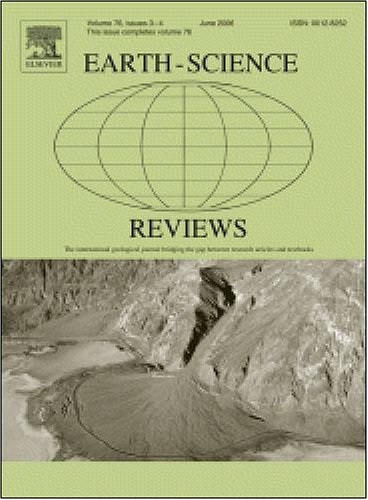Global patterns and driving factors of the carbon accumulation rate in coastal wetlands
IF 10
1区 地球科学
Q1 GEOSCIENCES, MULTIDISCIPLINARY
引用次数: 0
Abstract
Coastal wetlands play crucial roles in sequestering organic carbon, which is vital for mitigating climate change. However, the global patterns and determinants of the organic carbon accumulation rate (CAR) in coastal ecosystems remain highly uncertain. In this study, we evaluate the spatial variability of the CAR across coastal wetlands around the world. In addition, we assess the direct and indirect effects of climatic, edaphic, vegetative, marine, and anthropogenic factors by compiling a global CAR database. The results show that the average global CAR in coastal wetlands is 202.75 ± 252.31 g C m−2 yr−1, with significant differences between tidal marshes and mangroves (p < 0.05). Soil carbon is the primary direct driving factor of CAR variations globally, whereas climatic and marine factors are the primary indirect driving factors. Climate influences the CAR by affecting the vegetation, soil, and marine conditions. Marine factors, especially salinity, have a negative effect on the CAR, whereas global mean sea level rise has a positive effect. Human activities indirectly influence the CAR by affecting the characteristics vegetation and soil. Our findings highlight that natural forces exert dominant control over carbon accumulation in coastal wetlands, whereas anthropogenic interventions can exert both positive and negative impacts on this process. These results emphasize the effects of interactions among multiple environmental driving factors and human activities on global CAR patterns.
海岸带湿地碳积累速率的全球格局及驱动因素
沿海湿地在吸收有机碳方面发挥着至关重要的作用,这对减缓气候变化至关重要。然而,沿海生态系统有机碳积累速率的全球模式和决定因素仍然高度不确定。在本研究中,我们评估了全球沿海湿地CAR的空间变异性。此外,通过编制全球CAR数据库,我们评估了气候、土壤、植被、海洋和人为因素的直接和间接影响。结果表明,全球滨海湿地的平均CAR为202.75±252.31 g C m−2 yr−1,潮汐沼泽和红树林之间差异显著(p <;0.05)。土壤碳是全球CAR变化的主要直接驱动因子,而气候和海洋因子是主要间接驱动因子。气候通过影响植被、土壤和海洋条件来影响中非共和国。海洋因素,特别是盐度对CAR有负面影响,而全球平均海平面上升对CAR有积极影响。人类活动通过影响植被和土壤特征间接影响中非共和国。研究结果表明,自然力量对滨海湿地碳积累起主导作用,而人为干预对这一过程既有积极的影响,也有消极的影响。这些结果强调了多种环境驱动因素和人类活动之间的相互作用对全球CAR模式的影响。
本文章由计算机程序翻译,如有差异,请以英文原文为准。
求助全文
约1分钟内获得全文
求助全文
来源期刊

Earth-Science Reviews
地学-地球科学综合
CiteScore
21.70
自引率
5.80%
发文量
294
审稿时长
15.1 weeks
期刊介绍:
Covering a much wider field than the usual specialist journals, Earth Science Reviews publishes review articles dealing with all aspects of Earth Sciences, and is an important vehicle for allowing readers to see their particular interest related to the Earth Sciences as a whole.
 求助内容:
求助内容: 应助结果提醒方式:
应助结果提醒方式:


